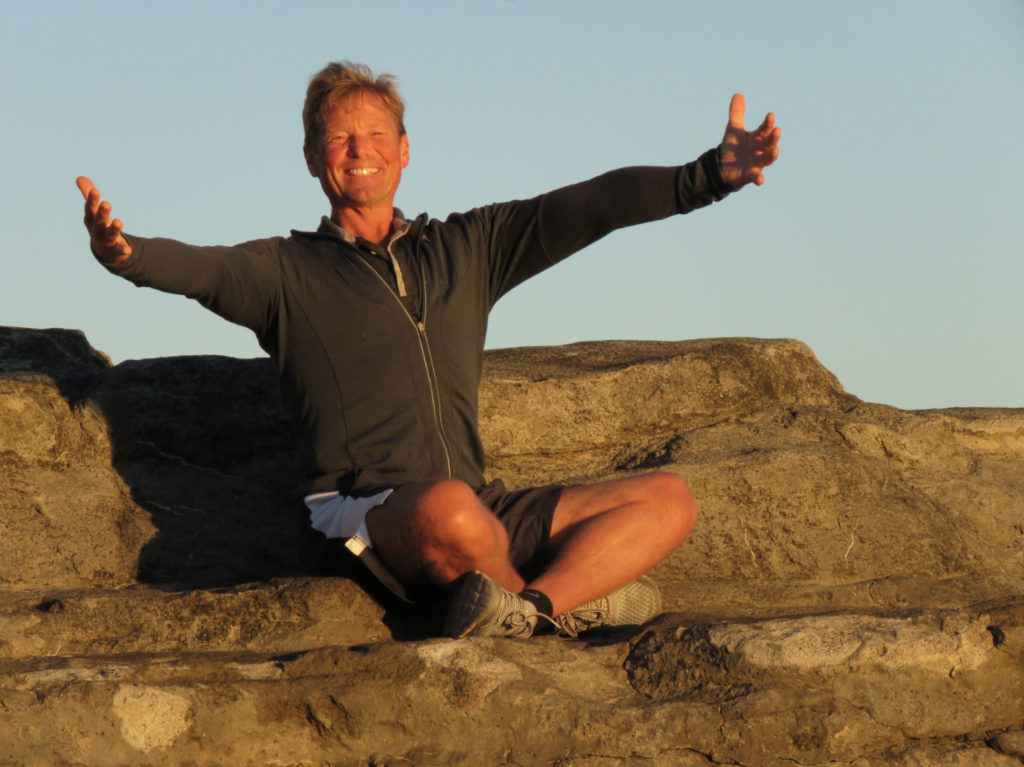
How to Meditate. Tips by Dr Sven
Meditation has gone mainstream for good reasons.
- The evidence confidently shows physical, emotional and cognitive benefits [i]
- Roughly 2,500 years of dedicated practice proves safety
- Meditation presents as a foundation competence for our future
- It can be the most enjoyable part of your day and enlightens the rest
So, why isn’t everybody meditating? Even, philosopher of our time, Noah Yuval Harari [ii], recommends meditation. He believes it generates the mental and emotional resilience required in our future of artificial intelligence and increasing human redundancy.
The firs treason is overload – the very reason we should be meditating. The second is language. Meditation or mindfulness can trigger xenophobic reactions or seem too intense. The third is the immaturity of the field with a flood of over enthusiastic novices. The fourth is a failure of execution.
The last is the one to be confronted. The knowing-doing gap.
To be fair,I recommend that you secure your sleep and exercise first. To meditate when you are sleep deprived or unfit is wasteful. However, for many their meditation practice is the solution to sleep and the motivation to move.
If meditation is your next challenge, here are some tips to get the wins.
1. Get the language right
Meditation is our word for a strategic investment. Tactical Calm or Breath Control is for quick relaxation. Tactical Focus is for practical attention skills. We have dropped mindfulness as too broad. Be confident in the word you choose. You do not want to feel embarrassed or ashamed when you talk about it. Fortunately, there are many paths.
2. Allocate the time
While at first it feels like booking a dentist appointment, you have to get serious about allocating protected time. There is a theme that the minimum investment for sustainable gains is 8 minutes per day. Be on time for this appointment every day. Imagine it as a confirmed meeting with the CEO of life – which is exactly what it is. Even if the appointment is a mess, stick with the full allocated time. Two to five minutes is a good start.
3. Play – be curious and creative
A big disappointment is when you sit down to control your mind and find perfect bliss. To your dismay, as you sit your mind dissolves into agitated chaos.Within minutes you are miserable – appalled to discover that you have absolutely no control over your thoughts and feelings.
Be relaxed and playful. You are entering a virtual world with a whole new set of rules.You have switched external stimuli such as weather, work, gadgets, and relationships to an inner world of biochemistry, emotions and thoughts. For many this is foreign territory. You will have to learn to relax into this new drama and get to know the characters.
Watch the pain and see how it tugs for attention and sympathy. Really focus into that feeling of anxiety and experience how it wants to take control of your mind and movement. Look clearly into the bubbling stream of thoughts and images and how easily they can snatch away your commitment to focus on your breath – even hijack the entire practice.
Your job will be to discover who you are in this kaleidoscope of sensations, feelings and thoughts. I sense that itch. I feel that frustration. I notice that thought. Be present and attentive to the “I”. Keep coming back to yourself as the subject, the watcher or the witness.
4. Establish your base practice
Your base practice is to sit comfortably on chair or cushion:
- Keep your spine light and long.
- Let your shoulders roll backward and down.
- Breathe through your nose.
- Relax your chest and let your sternum sink downward.
- Exhale completely over six seconds and pause gently.
- Inhale slowly and evenly aiming for four seconds.
- Keep your chest, neck and face relaxed
- Allow your belly, side ribs and loins (over kidneys) to expand.
- Keep your face and neck relaxed.
- Notice your pulse, muscle tone, and skin
- Focus on the rise and fall of your upper belly – ‘rising…..falling…..rising…’
Breathing at 10 seconds per breath means 48 breaths. Simple. Yeah right.
5. Commit to daily discipline
Regardless of how messy, wasteful, frustrating or disappointing the experience, resolve to sit down tomorrow and repeat. You will miss the odd day. As much as possible secure a daily practice. Even if you need to lie in bed and breathe at the end of a hectic day, it is something. There is also a case for taking a minute every hour through the working day to sit up, relax, drop your attention to your breath and breath slowly (6 out, 4 in) for 6 breaths.
6. Set your basic rituals
Starting anew practice or daily ritual is challenging at first. After about six weeks it will become a routine that requires little thought or effort. For the first six weeks simply sit and breathe with an open, non-judgemental presence to the sensations, feelings and thoughts. Gently fix your attention on the rise and fall of breathing. Use the exhale as an anchor.
As your practice steadies, prepare with a few stretches or yoga poses to mobilise your joints, stretch the muscles and engage your diaphragm fully. Select a place that is quiet, peaceful and comfortable. Once your breath and attention are a little more stable, sense the life force in your body. Encourage feelings of peace, gratitude, appreciation and kindness. Let your mind settle quietly on your point of focus. Reach into the “I” or subject and be present to the show. Your sense of self becomes more stable. This is meta-awareness or meta-cognition. You have a reference point that is separate from the senses, feelings and thoughts.
As you grasp this meta-awareness, begin to lengthen your practice out to 20 or even 40 minutes.
7. Explore variations for deeper practice
When ready, explore meditation variations. In my own practice, I start with a tactical focus to initiate my practice. On Monday I generate feelings of calm, onTuesday vitality (energy), on Wednesday love, on Thursday contentment(gratitude) and Friday, joy. This is an excellent way to build strength in your positive emotions and if feels like a good build for the week.
Once you are deep in meditation there are three main branches [iii]. All are based on your now practiced ability to sit calm, clear, and present to your breath. The first is focused attention. Select a focus. The rising and falling of the abdomen, the flow of breath at your nostrils or simply a word or a visualisation. Resolve to hold your attention on that focus. Imagine your attention like a beam of light. You are the source that must direct, focus and fix the beam of light on the focus point.
The second is loving kindness. Start with feeling your body and sinking into a sincere acceptance, gentleness and kindness toward yourself. This is called self-compassion. Then bring to mind parents, partner, children and loved ones.Extend a genuine intention that they be peaceful, loving and joyous. As your capacity for loving kindness grows, extend that intention to your communities, all people, all sentient beings and ultimately the universe.
Finally, there is open presence. Imagine the “I” as subject or witness to body, emotion and mind (objects of awareness). You are reversing back up towards the source.You create distance from body, emotion and mind. Become one with awareness.When you ask the questions ‘who is aware?’ or ‘who am I?’, you begin to experience open presence. It is vast, expansive, free and beautiful.

Meditation can be fun. Come and play.
Sources:
[i] The Science of Meditation, Davidson and Goleman, 2017
[ii] 21 Lessons for the 21st Century, Noah Yuval Harari, 2018
[iii] Altruism, Matthieu Ricard, 2015
